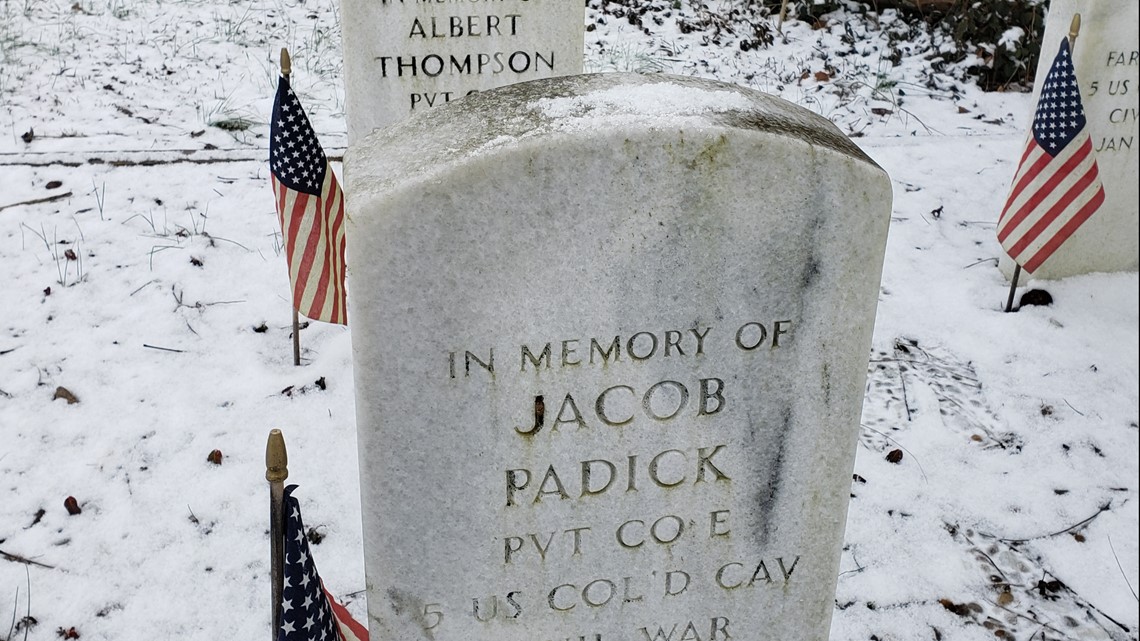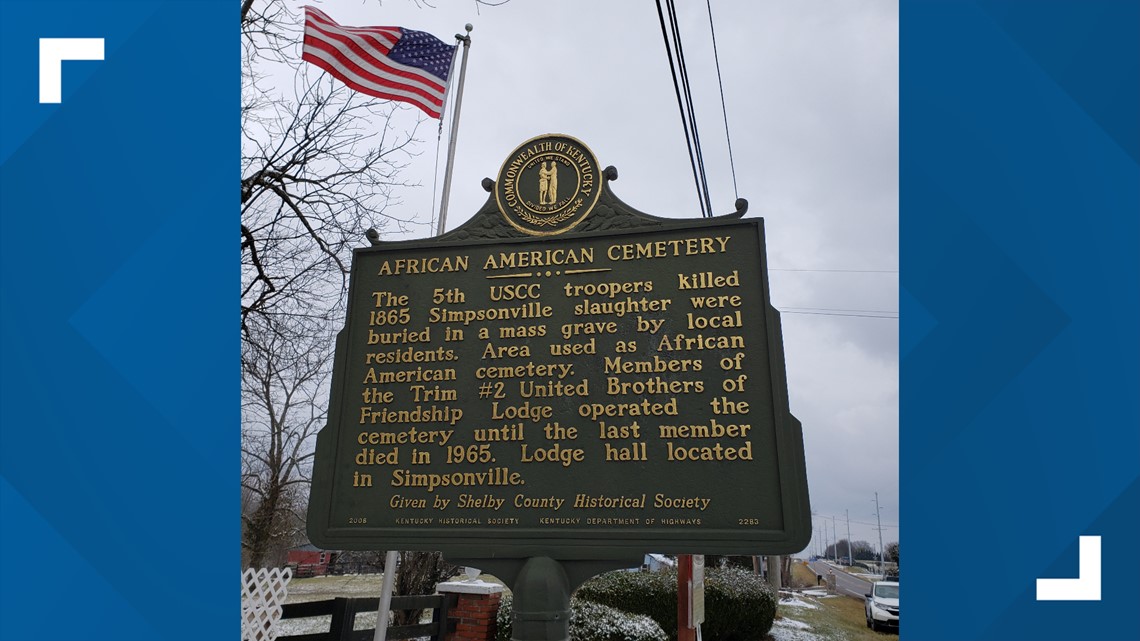LOUISVILLE, Ky. — When it comes to Blacks in the military, you’ve heard the story of the Buffalo Soldiers and the Tuskegee Airmen but have you heard of the 5th United States Colored Infantry Regiment, based right here in Kentucky?
“We firmly believe that all of our history needs to be preserved, taught," Jerry Miller, from the Shelby County Historical Society, said. "These men died for their freedom and died for you and me and we needed to not forget them and memorialize them here.”
Miller is referring to the Black soldiers who made up the 5th United States Colored Infantry Regiment based at Camp Nelson in Jessamine County.
The freed slaves turned soldiers were killed in Simpsonville on January 25, 1865.
“It was snowing, it was bitterly cold, and a troop of U.S. Colored Cavalry of about 80 men were driving about 900 cattle along the Old Midland Trail, which is today U.S. 60," Miller said.
But Confederate guerillas based out of Spencer, Anderson and Shelby Counties were waiting, planning to attack the troops.
The following day, the unthinkable happened.


“22 died here," Miller said. "They are memorialized right here. Maybe 8 others were wounded and they would have been taken to a U.S. hospital in Jeffersonville, Indiana.”
Miller said four died of their wounds and were buried in the national cemetery in Jeffersonville. Others who survived later became Buffalo Soldiers.
He said once the Confederate guerillas left, townspeople buried those killed in Simpsonville.
"In the afternoon after the guerillas left, the townspeople came out, gathered up the dead that they could find, and buried them in a mass grave," Miller said. "Then they came back the next day, they gathered up the rest of the men they could find, and buried them in another mass grave.”
The burial ground became a cemetery that the United Brothers of Friendship cared for. Today, the Buffalo Soldiers of Louisville have adopted the site and now take care of the memorial.


Miller told WHAS11 News that the white officer leading the group of Black soldiers, a man named Flynt, had been "tricked out of his boots the night before by the guerillas."
"When the herd got this far, he went to the dry goods store in Simpsonville to buy boots," he said. "That's where he was when the guerillas hit his men and he did not come to their aid.”
Since the Cavalry was created in September of 1864, the soldiers did not have a lot of battle experience. There's no documentation any guerillas were wounded, so it's unclear whether or not the conflict was a massacre or a gun battle.
Miller said it's a debate that continues to this day.


"If you look at the monument it has 'horrible massacre' in quotes," he said. "That quote was actually from a newspaper in that period. So it was a contemporary account."
Mille said there were reports over the first 50 years after the event that indicated that the Black soldiers got off one shot.
"One shot could have been one bally or just one man," he said. "We don't know. These men fought and died for their country and for their freedom.”
Many know the event as three different names, "Simpsonville Slaughter," "Horrible Massacre," and/or the "Simpsonville Massacre."
The historical marker dedication ceremony took place on January 25, 2010. It's number #2283 and can be found at the intersection of Shelbyville Road (U.S. 60) and Webb Road in Shelby County, Kentucky.
Make it easy to keep up-to-date with more stories like this. Download the WHAS11 News app now. For Apple or Android users.
Have a news tip? Email assign@whas11.com, visit our Facebook page or Twitter feed.
►Contact WHAS11’s Sherlene Shanklin at sshanklin@whas11.com or follow her on Facebook, Twitter, or Instagram.
WATCH our 30-minute Moments that Matter Special

